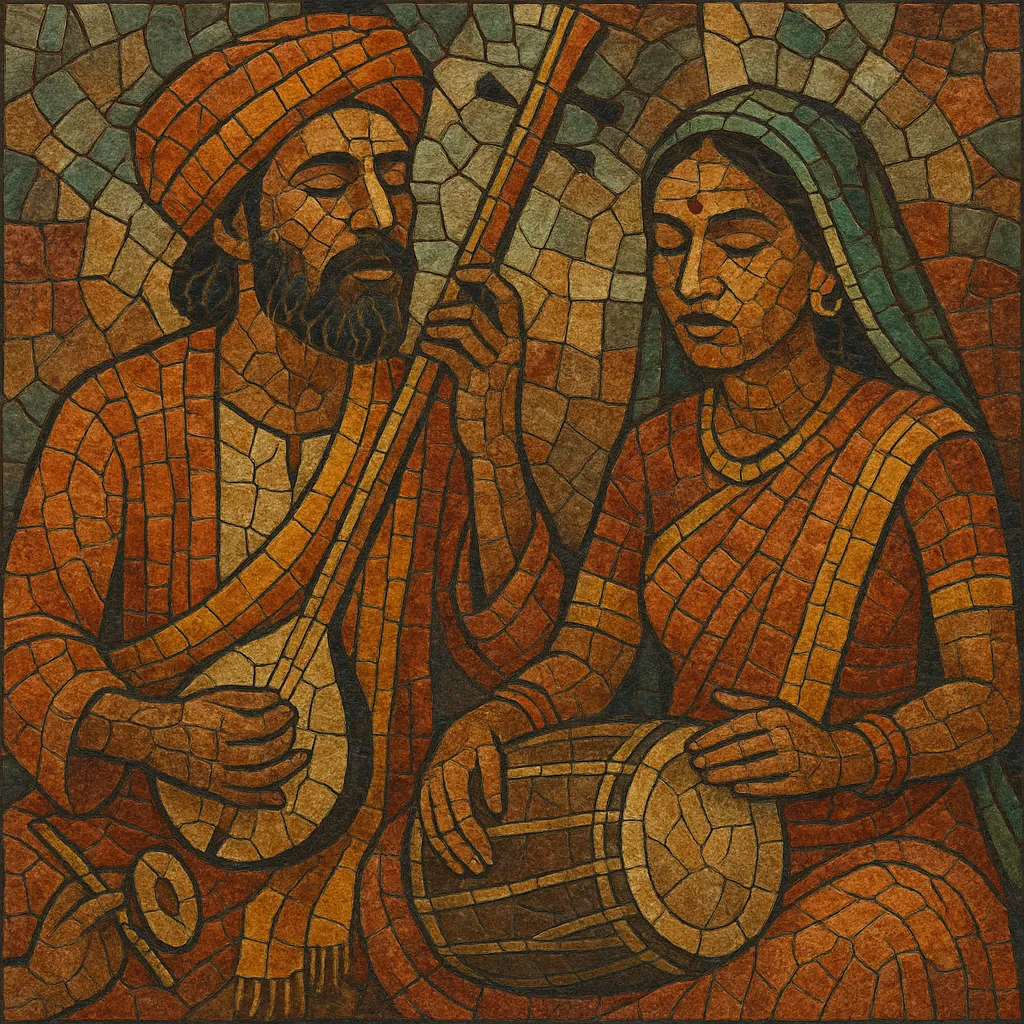
Baul gaan is the song tradition of the Baul mystic minstrels of Bengal, now spanning Bangladesh and the Indian state of West Bengal. It is a syncretic devotional-folk practice that blends Sufi and Vaishnava Bhakti ideas with a humanist, anti-ritual stance.
Performed by itinerant singers, Baul songs typically feature a lean, earthy instrumentation: the ektara (one‑string drone lute), dotara (plucked lute), khamak/khomok (tension drum), small frame drums like duggi, and hand cymbals such as kartal/manjira, with occasional khol/dhol. Melodies are raga-tinged but folk-rooted, often set to lilting cycles like kaharwa or dadra.
Lyrically, Baul gaan is philosophical and intimate. It explores deho-tattva (the body as the site of the divine), the quest for the ‘Moner Manush’ (the person of the heart), social equality, and ecstatic love, using everyday metaphors drawn from rural life. The delivery is direct, participatory, and trance-inclined, inviting chorus responses and communal singing.
Baul gaan coalesced in the Bengal region as itinerant mystics drew from Sufi, Vaishnava Bhakti, and local folk currents. While older roots are traceable, the tradition took recognizable shape in the 1700s, emphasizing personal experience over institutional religion and elevating the body as a site of spiritual realization.
Lalon Fakir (c. 1774–1890) became the emblematic figure of Baul philosophy and song. His corpus refined the metaphor-rich, dialogic style that questioned caste and ritual, and favored inward devotion. Akhras (gathering spaces) and wandering circuits helped spread the repertoire across rural Bengal.
Baul songs entered urban consciousness through collectors, broadcasters, and literary figures influenced by the ethos (notably Rabindranath Tagore). After the 1947 Partition, the tradition continued on both sides of the new border; fairs like Kenduli and Kushtia’s Lalon Mela reinforced transmission.
From the 1960s onward, renowned exponents brought Baul gaan to international festivals and recordings. Crossovers with folk-rock and world-music circuits expanded audiences without severing village-based lineages. UNESCO recognition and cultural initiatives further supported apprenticeships, even as commercialization posed challenges to traditional contexts.
Today, Baul gaan thrives through lineage-based training, akhra communities, and diaspora performances. Artists balance classic instruments and ragas with modest amplification and collaborative projects, keeping the core—philosophical lyrics, tranceful grooves, and communal participation—intact.

